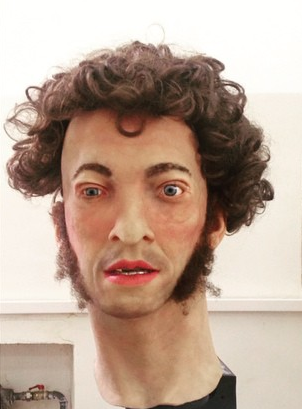Second rows of associations, or how to make the robot read "between the lines"

Studying applied psychology as part of a group of enthusiasts, an interesting pattern was revealed. It seemed to us that the found connections between words are obvious. But now, many years later, I begin to understand that people, for some reason, do not look in this direction.
Proof of this can be the recently appeared "poems" from Google's neural networks in the style of speechwriters of the mayor of a large city.
')
Examples of such "poetry":
“That was the only way.
It was the only way.
It was her turn to blink.
It was hard to say. ”
“He was silent for a long time.
He was silent for a moment.
For a moment it was quiet.
It was dark and cold.
There was a pause.
Now is my turn. ”
And, to paraphrase the words of the mayor himself, “Today, not everyone can program neural networks. Rather, not only everyone can program, only few can do it. ”
In order for the robot to write more adequate poems or understand the deep meaning of the already written, you should invest in it a system of association. For each source word, there is a “first order” or “explicit row” of associations. For convenience, it can be divided into several groups:
Visual: Sun -> Orange
Audio: Horse -> Zokot, here also include homonyms, rhymes, alliteration, well-established expressions (Navel -> Earth)
Kinesthetic: Rain -> Wet
Logical: St. Petersburg -> Window to Europe
This series is obvious and easy to read by man. This is confirmed by the game in the association.
But such a simple approach can not allow the robot to penetrate deep into the essence of the text. But robo-poets from Google, however, should use it to reduce the abstract abundance of their "works".
However, each first-order association can be represented as an initial word, to which it is also possible to construct its own series of associations. If you add several rows of “associations to associations” for the same word and subtract the “explicit series” from it, you get the “second series of associations” to the original word. This second and all subsequent series of associations is difficult to guess from the human mind, whereas the subconscious mind easily detects patterns and "reads between the lines." There is a situation that can be described by an anecdote:
- How much is 0.5 + 1/2?
- I sense that liter, but I can't prove it.
As a result, the text built on the ranks of hidden associations may seem completely illogical and incoherent, but very accurately convey the thoughts and emotions of a person. If we take into account this simple pattern in the computer analysis of texts, then it will be possible to determine what the author wanted to say, but did not say explicitly (but his subconscious passed it). A similar technique (without explaining the mechanics) is used by psychologists and psychiatrists, for example, in the Rorschach test or association test.
In order not to be unfounded, I will give an example of building a second series of associations for the word “Love”:

Obviously, out of the 256 associations of the second order (16x16), a serious proportion has already been used in the lyrics of pop songs, most of which are about that same “love”, which is the best proof of the above theory.
I believe that behind this simple-looking paradigm of semantic analysis lies a difficult path to creating a full-fledged programmatic consciousness (which is often called the loud term of AI).
Source: https://habr.com/ru/post/304324/
All Articles